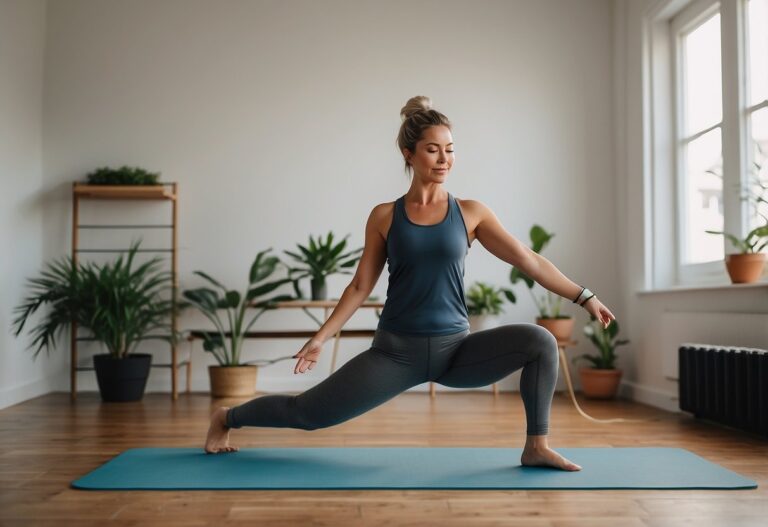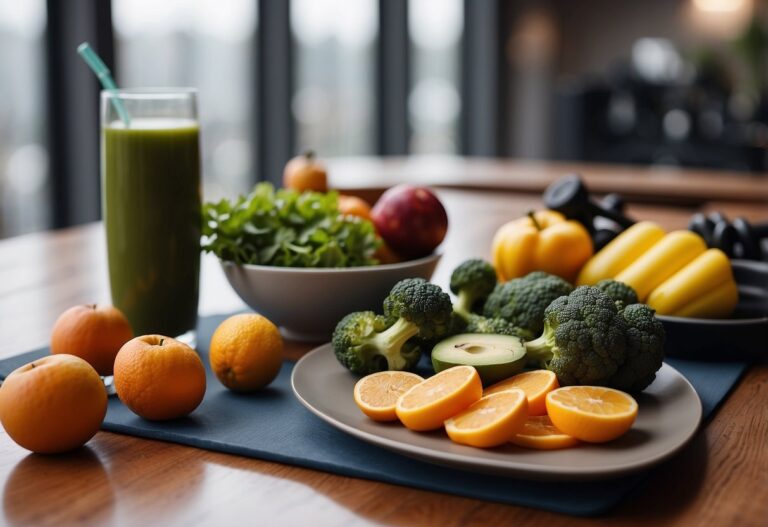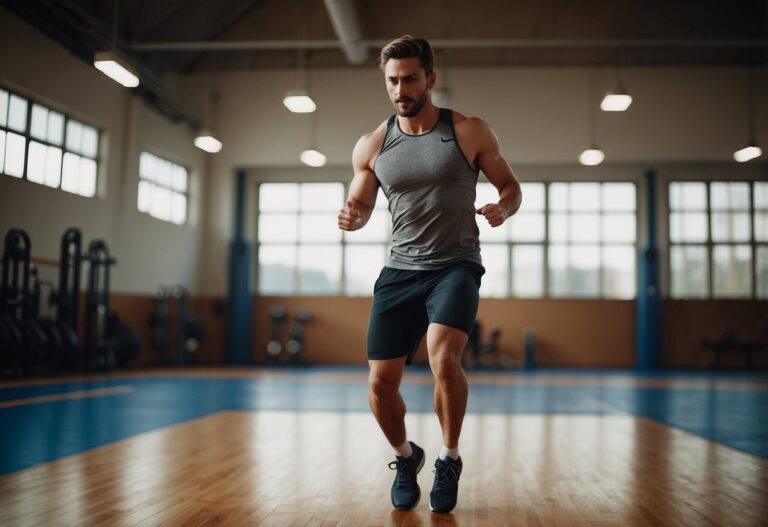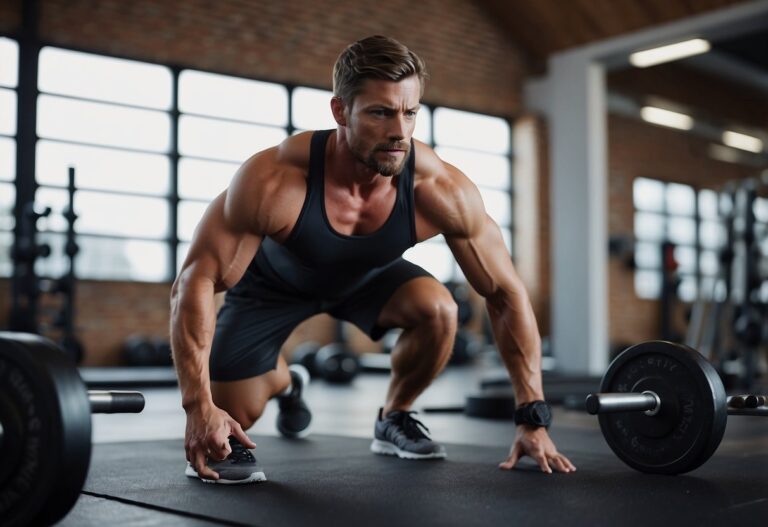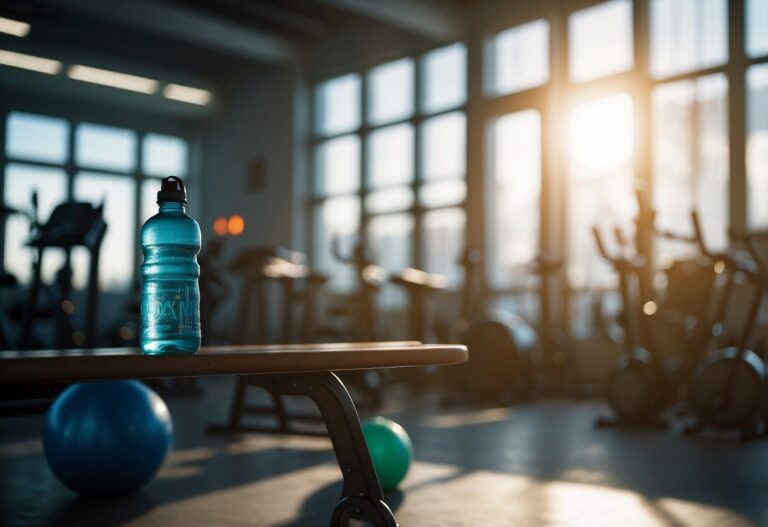If you’re keen on achieving your fitness goals quickly and efficiently, you’re in the right place. Gym workouts can be a fantastic way to build strength, improve endurance, and boost overall health. Exploring targeted tips can help you make the most of your gym sessions and see results faster.

Finding the right gym workout routine is crucial for any fitness journey. Whether you’re new to the gym or looking to switch up your routine, understanding the basics can set you up for success. This guide aims to simplify the process, offering practical advice that you can easily incorporate into your daily routine.
Warm Up with Dynamic Stretches
Starting your workout with dynamic stretches is a great way to get your body ready for exercise. Unlike static stretching, these movements help increase blood flow and improve flexibility.
Vinyasa Flow is a popular choice. This yoga move strengthens your upper body and opens up your back. Try going through five flows at an easy tempo.
Inchworms are another fantastic option. They help warm up your entire body and are a step up from Vinyasa Flows. They boost your flexibility while engaging your muscles.
Lastly, Jump Lunges are perfect for activating stabiliser muscles in your legs. This movement requires balance and is excellent for warming up your lower body.
Incorporate Compound Exercises
One of the best ways to get the most out of your workout is by incorporating compound exercises. These moves work multiple muscle groups at once, making them very efficient.
Think about exercises like squats or deadlifts. They are great for working your legs, core, and back all at the same time.
You can also try exercises like bench presses and pull-ups. These target your chest, shoulders, and arms, helping you build strength quickly.
When you do compound exercises, you will burn more calories and build more muscle. This is ideal if you have limited time to work out.
Consider adding these exercises to your routine. It will help you see improvements across different muscle groups and save you time in the gym. Find out more about the benefits of compound exercises here.
Use free weights instead of machines
When working out at the gym, consider using free weights instead of machines. Free weights like dumbbells and barbells can help you engage more muscles.
For example, if you do squats with a barbell, you’ll use your stabiliser muscles more than with a machine. This can lead to better strength and balance.
You can also try exercises like the one-arm dumbbell row. This move is great for your back and involves more muscles than using a seated cable row. Plus, it’s easy to do with just a dumbbell.
Free weights can be more convenient for home workouts too. Dumbbells don’t take up much space and are often more affordable than bulky machines, making them a practical choice.
Focus on Form, Not Weight
When you’re at the gym, proper form matters more than lifting heavy weights. Correct form helps prevent injuries and ensures that you’re working the right muscles.
If you’re unsure about your form, consider checking out these common form mistakes.
Run tall and relaxed and keep your movements smooth. This simple advice can fix many issues with your form, improving your workouts and results when you run.
Include High-Intensity Interval Training (HIIT)
Adding High-Intensity Interval Training (HIIT) to your routine can be a game changer. HIIT involves short bursts of intense exercise followed by rest periods. This method is great for burning calories and improving cardiovascular health.
You don’t need a lot of equipment for HIIT. You can do exercises like jumping jacks, burpees, and sprints. These workouts are efficient, often taking only 20-30 minutes.
HIIT is also versatile. You can adjust the intensity and duration to fit your fitness level. Give it a try, and you might find it to be a perfect fit for your busy schedule. For more detailed HIIT routines, check out these effective workouts.
Don’t skip leg day

Leg day is crucial for building a strong foundation. Skipping it can lead to imbalances in your body. Strong legs support better posture and reduce the risk of injuries.
A good leg workout includes exercises like squats and lunges. These moves target major muscle groups. For a detailed routine, check out this leg day workout.
Don’t forget nutrition. Carbs and pre-workout supplements can give you the energy needed for intense sessions, as mentioned in these top tips.
Keep pushing yourself and see those gains!
Stay Hydrated Throughout Your Workout
Drinking enough water is key when you exercise. Aim to drink 16 to 24 ounces two hours before you start. Just before you begin, have another 8 ounces.
During your workout, drink 16 to 32 ounces every 30 to 60 minutes, depending on how much you sweat. This will help you stay at your best.
If you prefer, you can use drinks with electrolytes, especially for long or intense workouts. They help replace salt and minerals lost through sweat.
Remember, your body needs hydration to recover well. So, keep a water bottle handy and take small sips regularly.
Track Your Progress in a Fitness Journal
Keeping a fitness journal can be a game-changer for your gym workouts. It helps you stay organised and motivated. You can record your exercises, sets, and reps. This makes it easy to track progress and see improvements.
Having a dedicated space to note your workouts helps you stay consistent. You can find many options, like the Cossac Fitness Journal and Workout Planner on Amazon.
Writing in your journal also keeps you accountable. When you see your goals on paper, you’re more likely to stick with them. Start by noting the date and your workout details. You can also include how you felt and any milestones. This way, you celebrate small wins and stay motivated.
Mix up your routine to avoid plateaus
Hitting a plateau in your workout can be frustrating, but it’s common. The key to breaking through is to mix up your routine regularly.
Start by changing the order of your exercises. Instead of always starting with cardio, try beginning with strength training.
Introduce new types of workouts. Consider adding yoga, pilates, or dance classes. These can keep workouts exciting and challenge your body in different ways.
Switching the equipment you use can also help. If you always use dumbbells, incorporate kettlebells or resistance bands for variety.
Routine changes don’t have to be major. Even small tweaks, like adjusting your rest periods or increasing reps, can make a difference.
Keep your workout playlists fresh. Music can boost your mood and keep you motivated during workouts.
Trying new activities outside the gym, like hiking or swimming, can be refreshing and keep you engaged.
For more ideas, consider exploring these tips from Type A Training and Muscle & Strength. These resources suggest changing your routine every few weeks to keep seeing progress.
Give yourself rest days

Rest days are crucial for your fitness journey. They help your muscles recover and grow stronger after intense workouts.
On rest days, consider doing some light activities like walking or stretching. These can keep you active without putting too much strain on your body.
If you’re dealing with soreness, try self-myofascial release, such as using a foam roller. This can boost blood flow and reduce muscle pain, according to Women’s Fitness.
Even taking a full day off can be beneficial if you’re feeling particularly fatigued. Remember, your body needs this time to repair and get ready for your next workout.
Importance of a Balanced Workout Routine
A balanced workout routine is crucial for your fitness journey. It combines elements of cardio exercises, strength training, and flexibility to ensure that all aspects of your health and well-being are addressed. This section covers each element in detail.
Cardio Exercises
Cardio exercises are key for strengthening your heart and improving your overall cardiovascular health. Activities like running, cycling, and swimming increase your heart rate and help burn calories. Incorporating at least 150 minutes of moderate-intensity cardio or 75 minutes of vigorous-intensity cardio each week is recommended for optimal health.
Regular cardio can also improve your stamina and endurance, making everyday activities easier. You might notice a boost in energy levels and mood, thanks to the release of endorphins. Whether it’s a brisk walk or a dance class, find a cardio activity you enjoy to stay motivated.
Strength Training
Strength training helps build and maintain muscle mass, which is vital as you age. Exercises like squats, presses, and deadlifts target multiple muscle groups, making them efficient for building strength. Aim for two to three strength training sessions per week, focusing on different muscle groups each time to allow for recovery.
Using free weights, machines, or body weight, you can work on increasing resistance and intensity gradually. Strength training not only boosts metabolism but also improves bone density, reducing the risk of osteoporosis. Incorporate exercises that challenge you, and remember to prioritise proper form to prevent injuries.
Flexibility and Stretching
Flexibility and stretching are often overlooked but are essential for a balanced workout routine. Stretching exercises improve your range of motion, reduce muscle tension, and lower the risk of injuries. Stretch major muscle groups after each workout, holding each stretch for 15-30 seconds.
Incorporate activities like yoga or Pilates, which combine stretching with strength and balance training. Regular stretching can enhance your coordination and posture, making it easier to complete other exercises effectively. Flexibility also aids in quicker recovery, as it helps improve blood flow to muscles, reducing soreness and enhancing overall mobility.
A well-rounded routine that includes cardio, strength training, and flexibility ensures you stay fit and healthy while preventing burnout and injuries.
Nutrition Tips for Women
Eating the right foods before and after your workout can make a big difference in your performance and recovery. Here are some practical tips to help you fuel your workouts effectively.
Pre-Workout Nutrition
Before you hit the gym, it’s important to eat foods that will give you energy without causing discomfort. About 30 minutes before your workout, focus on quick-releasing carbohydrates. These provide a fast source of energy.
- Quick-Releasing Carbs: Foods like a banana, dried fruit (e.g., dates, raisins), or a small glass of fruit juice can boost your energy levels.
- Low Fibre and Fat: Avoid high-fibre and high-fat foods as they can make you feel sluggish.
- Hydration: Drinking enough water is crucial. Coconut water or a pre-workout drink can help keep you hydrated.
Remember, everyone’s body is different. Try different foods and timings to see what works best for you.
Post-Workout Nutrition
After a workout, your body needs nutrients to recover and rebuild muscle. Eating the right foods can help speed up recovery and improve future performance.
- Protein: Essential for muscle repair. A protein shake or Greek yoghurt with some fruit can be a great option.
- Carbohydrates: Replenish your energy stores with whole grain toast, sweet potatoes, or a fruit smoothie.
- Hydration: Rehydrate with water or coconut water to replace lost fluids.
Aim to eat a balanced meal containing both protein and carbohydrates within an hour of finishing your workout. Consistency in your nutrition routine can make a significant difference in how you feel and perform.


